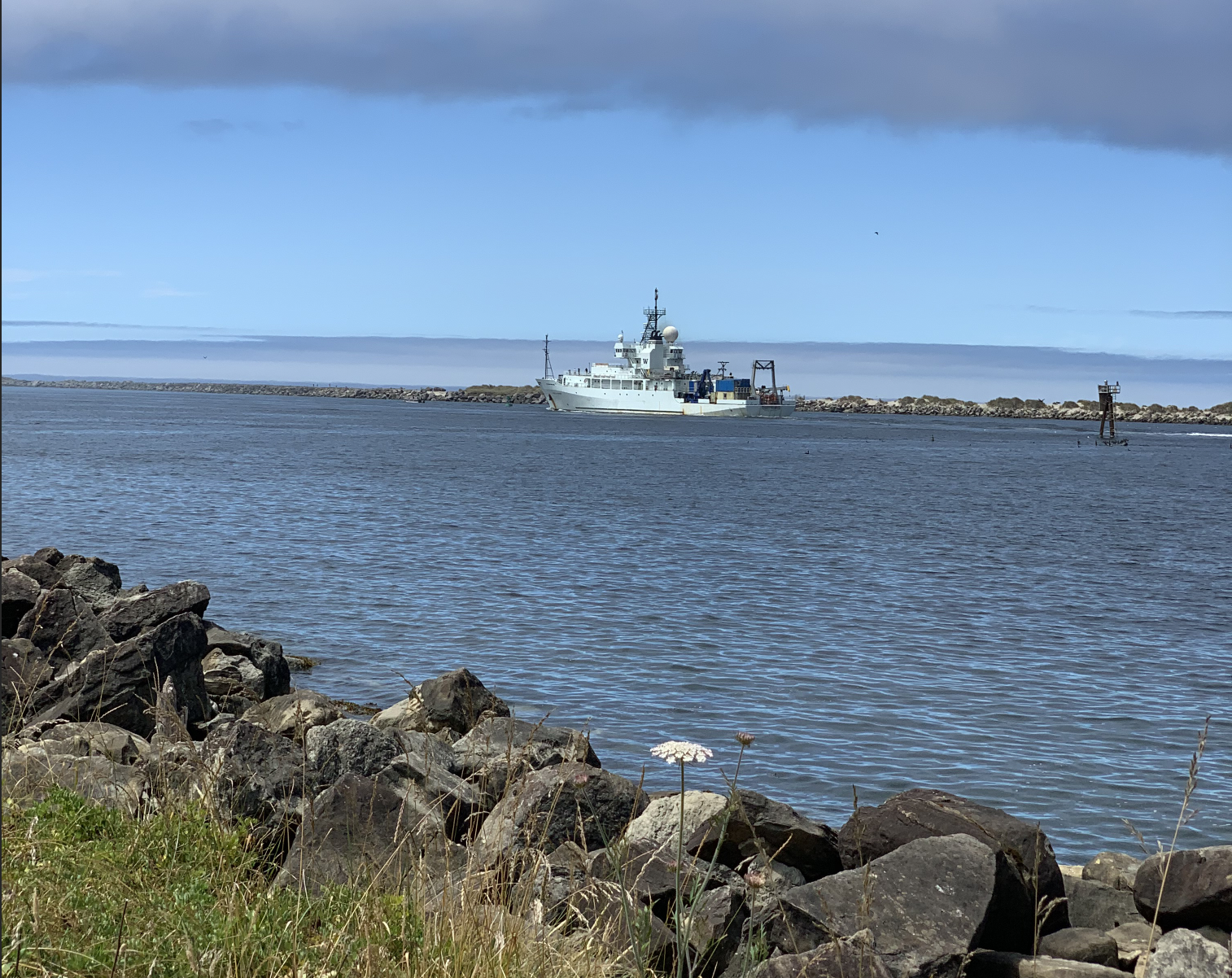
On August 1, the R/V Thomas G. Thompson, hosting the remotely operated vehicle Jason departed for Leg 1 of the National Science Foundations’ Ocean Observatories Initiative Regional Cabled Array expedition. This will be an intense 30-day cruise with over 200 instruments to bring onboard and return to the sea: >80,000 lbs of equipment/instrumentation was shipped down to Newport, OR to be mobilized onboard the vessel.
The UW APL support shore team opened the logistics facility, led by Larry Nielson on July 20th, in preparation for accepting seven 53 ft long semi trucks! and one 12 ft flatbed, which safely hauled the RCA infrastructure to Newport.
The UW Applied Physics Laboratory team of engineers and School of Oceanography scientists and students pushed hard to mobilize the ship in record time. For them, this was a long haul as all had been in 14 days of strict isolation and at least two COVID tests to insure all were cleared to join the vessel. “Ah the smell of fresh sea air, feeling a breeze on your face, and being able to walk the full length of the 274ft-long Thompson, free from the constraint of the four walls of a hotel room!”
It was with great relief for the 13-member team board the ship on July 31 at 0700 and begin crane operations at 0800. Mobilization was completed at 1300 in record time, then came the task of ‘squirreling’ everything away and tying all equipment down in preparation for heading out to the NE Pacific. It was under blue skies and calm seas that the ship sailed down the Yaquinna Bay channel to begin work at the Oregon Offshore site.

Under remarkably calm seas, the ROV Jason went into the water for its first dive at 1730 (J2-1249) to turn one of the small seafloor substations – a low voltage junction box, followed by three dives to swap out the instrumented stationary platform and winched shallow profiler science pod on the Oregon Offshore Shallow Profiler Mooring. If was great to see live streaming from shore and watch Jason work expertly around the moorings, unhooking wet mate connectors, moving locking mechanisms, and latching and unlatching into the instrument platforms. Because the mooring is only 4-5 hrs offshore, in highly productive waters, the main 12 ft across, 7,000 lb platform at 200 m water depth has become an island hosting a diverse biologically community that has been wafted onto the platform by the nutrient-rich currents as they sweep past. The first set of dives went very well, its was fantastic to be back in the water again after a year, and to see the submarine infrastructure again that wires the ocean and brings the internet undersea.

